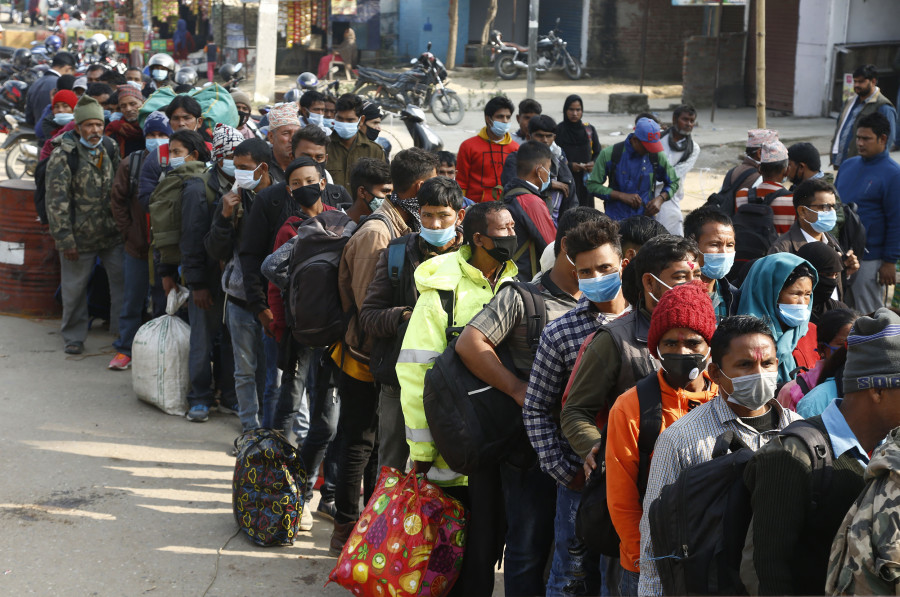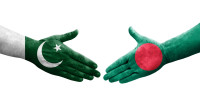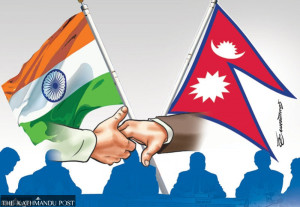Columns
Perilous path to quick-fire prosperity
Nepal needs to marshal all its resources to ensure the safety and welfare of its citizens.
CK Lal
When a Yeti Airlines passenger aircraft carrying 72 people crashed in Pokhara, the news flashed worldwide within minutes. The public grief over the loss of lives in the horrendous accident may look insurmountable, but the pain remains only with the victims' families after a while. The direct or indirect impact of such mishaps on the country's political economy lasts longer. Like the hugely overestimated potential of harnessing Himalayan rivers for hydroelectricity, tourism has continuously been sold as the possible saviour of the Nepali economy. The effect of climate change on ambitious hydroelectricity projects remains to be properly assessed. The sinking of the ground in Joshimath and at least five other places in Uttarakhand, India, due to massive intervention in the natural balance of the fragile mountains, holds important lessons for development planners. Investments in the tourism and hospitality industry are even more sensitive to natural and artificial disasters.
The tourism sector in Nepal suffered for at least a decade due to the armed conflict, even though the Maoist insurgents seldom harmed a foreign visitor. The most luxurious resort in Pokhara collapsed primarily due to the impact of the insurgency that kept the big spenders away. Just when the tourism sector had begun to recover, the Gorkha Earthquake jolted the hospitality industry. The travel trade recovered rather quickly despite political uncertainties in the wake of a controversial constitution. In the absence of anything more productive to invest, banks had begun to extend huge loans for the construction of hotels. It's unclear whether some of these loans were a roundabout way of bypassing regulatory limitations on speculation in the real estate market. Then Covid-19 hit, and tourism went into a tailspin, forcing hoteliers to demand further relief.
It's not just the profit sector that has been borrowing big from commercial banks to erect fancy hotels in anticipation of tourist arrivals, ostensibly from China and India. The public sector, too, has incurred massive debts to unveil two international airports in Bhairahawa and Pokhara in a row. Plans for a third one at Nijgadh have been revived. Rugged terrain, erratic weather, ill-trained operators, the indifferent standard of vehicles, careless maintenance, narrow and winding roads of inconsistent quality and poor enforcement of traffic rules make land transport in Nepal the riskiest in South Asia. The unfortunate accident in Pokhara will likely bring the focus back to aviation safety. It is unlikely that the revenue from tourism, income from exports or an increase in industrial activity will be enough to pay back the huge loans taken for public investments in physical infrastructure. The dependency of the Nepali economy upon remittances is likely to continue in the foreseeable future.
Relief valve
Nepali workers travelling abroad in search of work has a long history. Way back in 1260, a skilled craftsman from Kathmandu Valley—later identified as Arniko—travelled to mainland China where he is believed to have introduced the pagoda style of building temples. Gorkhali warriors have been serving the ruling princes of the Ganga plains for ages. Balbhadra Kunwar took the tradition to the court of Lahore, and the term Lahure in Nepali was born. Gorkhalis have since served in almost every war that the British Empire and independent India have fought. Pension and compensation for Gorkha warriors have remained the most stable source of foreign currency earnings for over two centuries.
Exact figures are hard to come by as a significant part of the remittances is channelled through unofficial means, but it's safe to assume that the contribution to the economy amounts to nearly a third of the national income. It is estimated that remittances provide more convertible currency than foreign development assistance and foreign direct investment combined.
The benefits of increased remittance inflows are impossible to miss. The families that receive money from their members working abroad eat more, dress better, live in safer houses, put their children in for-profit schools longer and are able to buy healthcare more easily. With a rise in consumption, trading increases, and the government is able to collect more taxes from higher imports. It leads to what economists call the Dutch Disease—the harmful effects of a large increase in income that makes the government complacent. It has become difficult to extricate Nepal from the remittance trap as the country continues to consume more without a concurrent increase in its productive capacities.
The costs of the demographic dividend flying away to distant lands to work for a pittance—the average remittance per person perhaps amounts to less than $2,500 a year—are more difficult to calculate. Body bags and coffins arriving at Tribhuvan International Airport are relatively easy to count, but it's difficult to keep track of the crippled kidneys of the exhausted returnees. The social and psychological price that the family members pay for keeping their ablest youth employed abroad is impossible to work out.
With little hope on the horizon—no agricultural revolution in the making, little prospect of enhancing industrial output and the near impossibility of a further increase in development aid or foreign direct investment—remittances will remain the mainstay of the Nepali economy. At best, tourism shall remain the playfield of the financial elite employing a small number of the educated middle class and contributing much less than the optimistic estimate of 15 percent to the GDP.
Reality check
A measure of food sovereignty is one of the fundamental conditions of sovereignty in political economy—a country that can't feed itself has to perforce hawk its independence in foreign policy to keep itself afloat. Even though critiqued at home, the Food for Peace Programme of USAID has been one of the most effective tools to win dictators and influence democrats abroad. Nepal has to rethink its agricultural policies to become self-sufficient, at least in producing food grain and reduce imports of edible oil and oil seeds from as far afield as Argentina and Brazil. Such a policy will require increased investment in irrigation facilities rather than four-lane highways.
It is belabouring the obvious, but safety and security have to be the primary focus of the aviation sector. Before more airports are built, aviation regulators have to develop a policy framework and institutional arrangement that is in tune with international standards. While promoting Nepal as a destination for MICE tourism is fine, investing scarce public resources to create humongous facilities is wasteful.
Beyond ensuring energy security for the country, further investment in hydroelectricity is best avoided at this stage. Nepal has first to develop its institutional capacity to handle the geo-economic rivalry that invariably comes into play whenever decisions about any mega project have to be made. Exporting electricity to Bangladesh is a goal worth pursuing, but not in a geo-political hurry. The fantasy of a railroad to prosperity needs to be shelved for now. The transformation of the political economy in a landlocked country with a challenging topography and poor institutions is arduous. For now, Nepal needs to marshal all its material and diplomatic resources to ensure the safety and welfare of its citizens doing dirty, difficult and dangerous jobs in hazardous conditions in 172 countries with one of the weakest passports in the world. Everything else is gloss.




 15.12°C Kathmandu
15.12°C Kathmandu















